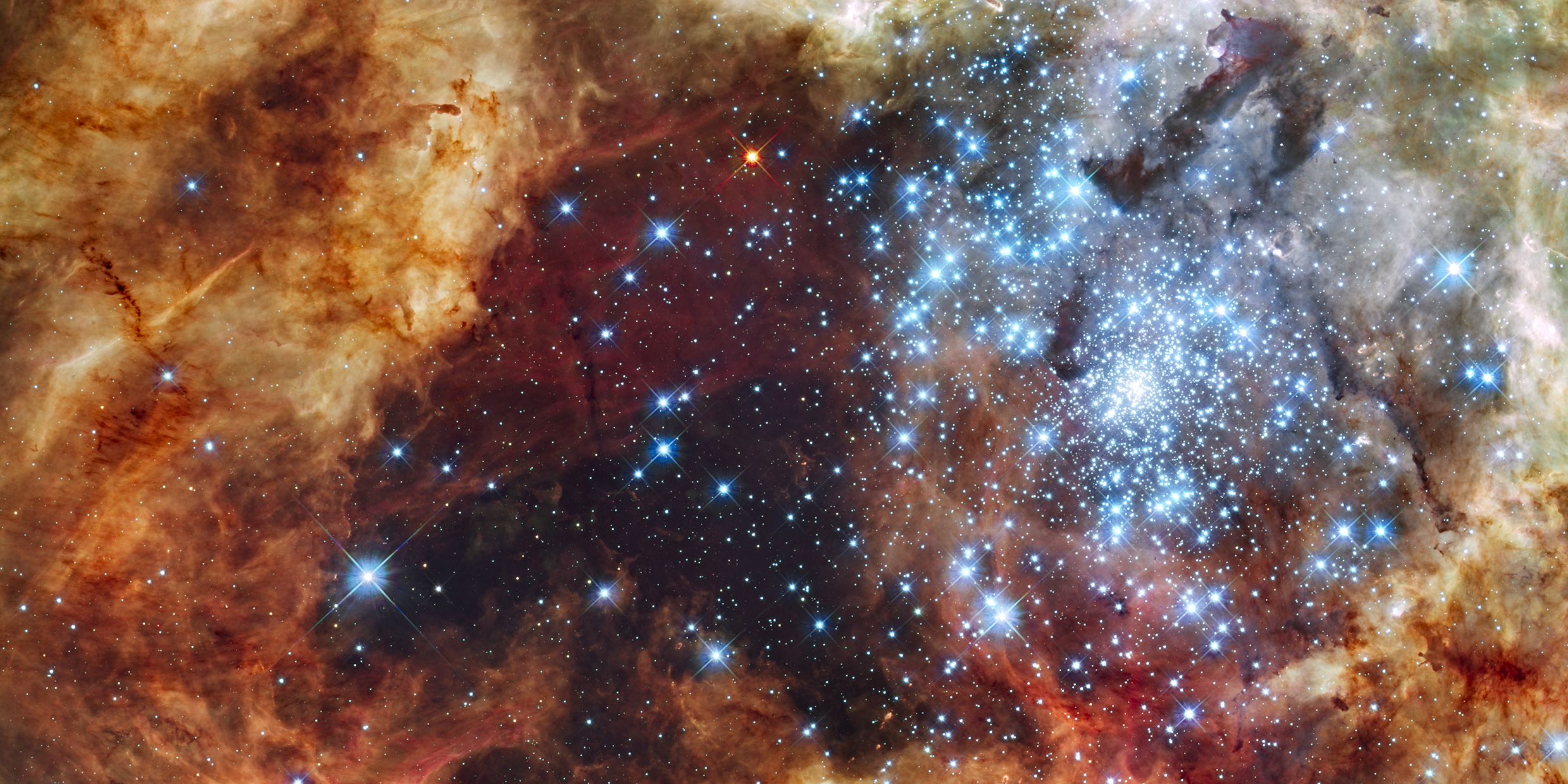Originally published 19 November 1984
A population profile of the stars is like a pyramid.
At the top of the pyramid are the blue giant stars, the lords of the galaxy. They are few in number and exceptionally luminous. Blue giants are as much as 10 times hotter than the Sun and 100 times more massive. They burn with a ferocity that exhausts their nuclear fuel within a few million years. The stars of Orion’s belt are blue giant stars, distant, dazzling, dwarfing the Sun, doomed to an early death.
At the bottom of the pyramid are the crowded ranks of red dwarf stars. These tiny stars are typically not much larger than Jupiter. They are cooler and less luminous than the Sun, and burn slowly for tens of billions of years like banked fires. Many of nearest neighboring stars are red dwarfs, but they are so dim they can be seen only with a telescope.
The Sun is in every sense a typical star. It is middle-sized, middle-aged, and of average temperature, comfortably lodged in the middle echelons of the stellar pyramid.
Variety of stars
Until recently, astronomers thought the dynamics of star formation ruled out the existence of stars more than 100 times as massive as the Sun. And they believed that objects with less than a 25th of the Sun’s mass would not be sufficiently hot at their cores to initiate stellar burning.
Now, discoveries of super bright and super dim star-like objects are causing astronomers to redefine their picture of the stellar population.
What may be the most massive star yet discovered has been found in the Large Cloud of Magellan, a small companion galaxy to the Milky Way. The object designated R136, and it is located near the center of a cloud of hot, ionized gas known as the Tarantula Nebula. The Tarantula Nebula is the largest and brightest gaseous nebula in the local group of galaxies. The gas of the nebula is caused to glow by the radiation of hot young stars embedded in the cloud. R136 is by far the brightest of the objects embedded in the cloud. It pours out energy equivalent of 50 million Suns.
It is not yet certain whether the object buried at the heart of the Tarantula is a single enormous star six times more luminous than any star previously known, or a cluster of blue giant stars packed into an extraordinarily small volume of space. Either hypothesis forces astronomers to reconsider their theories for how stars form.
Discoveries to come
The Space Telescope to be launched by NASA in 1986 will help determine the true nature of the mysterious object in the Tarantula. That telescope, flying high above the atmosphere, will have a resolution 10 times better than ground-based instruments.
A potentially more exciting discovery is the object known as LHS 2924, reported last year by astronomers Robert Probst and James Liebert. LHS 2924 appears to be the first recorded example of a “brown dwarf,” an object cooler and less luminous than the red dwarf stars that populate the lowest ranks of the stellar pyramid. The object is presumably a planet-sized ball of gas whose gravitational contraction produces enough heat to make it glow faintly, but not enough to ignite the nuclear fires that make a true star shine.
With the help of the Hubble Space Telescope (launched in 1990, after this essay was originally published), astronomers have determined that the object known as R136 within the Tarantula Nebula is actually a dense cluster of super-hot, massive stars (pictured above) rather than one single stellar object. ‑Ed.



